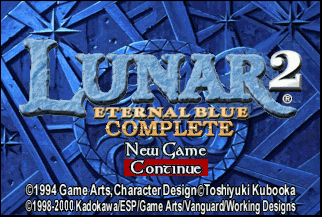
After my somewhat recent playthrough, and review, of Star Ocean, I felt compelled to immediately jump into the sequel. Unlike its predecessor, I had never played Star Ocean: Second Story.
As a longtime fan of the original, I had longed to finally continue the series and see how the universe was further developed.
With my only criticism of the previous game being a somewhat lackluster story, I yearned to experience the stellar mechanics and gorgeous interstellar visuals in a new setting.

In an era dominated by polygons, Star Ocean: Second Story stands out by utilizing gorgeous 2D sprites atop the characteristic PSX blend of 3D and artfully crafted pre-rendered backgrounds a la Final Fantasy and Resident Evil.




To start, all of the pre-rendered backgrounds are some of the most detailed, and colorful on the console. Hues are seemingly chosen very carefully to create a brilliant contrast between back- and fore-ground, giving Star Ocean: The Second Story a visual advantage over its contemporaries.
Colors and details are not limited to pre-rendered backgrounds; the spritework in this game is meticulously crafted to ensure the player enjoys the familiar 2D character models of yesteryear, while also making apparent that they have entered the next generation of gaming: 32-bits man!

The sprite animation is near-flawless; characters slash, jump, dash and cast magic in an incredibly smooth manner, making the battle look and feel dynamic. This visual touch not only enhances the game aesthetically, but also enhances the gameplay tremendously, by making the player feel directly involved in the action, something uncommon in JRPGs.

This lightning-fast visual style, in tandem with an expertly orchestrated, hard-hitting OST, assist in immersion and make each and every battle feel like a healthy marriage between hack-and-slash and artistic expression.
Battles permit free movement of an individual party member via the D-pad, while using the X button initiates a standard attack on the closest enemy.
During this time other party members will execute pre-set AI behaviors, that vary from using their most powerful techniques, avoiding enemies, healing allies, conserving special attacks, to a bevy of other choices specific to the class of the character.
More specific strategies can be devised by switching the character being controlled on the fly, using menu-based battle commands to execute magic, changing battle formation or party member composition, and executing techniques via preset hot keys on each of the four shoulder buttons.
The presets techniques, unlike in the original Star Ocean, are distance-independent, allowing their execution from anywhere on the field.
These techniques, or “Killer Moves,” and magics are learned both by leveling up, and by using special items garnered by crafting or exploration.
These battles and techniques are accompanied by an improved version of the detailed Skill and Talent system established in its predecessor.
Skills can be purchased in Skill Books from guilds scattered throughout the game, after which point they can be learned via expenditure of Skill Points (SP) garnered from defeating enemies in battle.
These Skills, when learned in groups, provide stat increases, functions outside of battle and Specialities.
Specialities vary widely from learning Music that alters encounter rates, stats, and health, to Smithing or creating weapons, items, and more.
As multiple character’s Specialities are improved by leveling up associated skills, the party’s combined power can be harnessed to access super specialities like Orchestra, which creates a symphony that for its play time, increases the success rate of other specialities, Authoring, which permits the collection of passive income in the form of royalties for the party member’s novels, and a variety of others with functions ranging from decreasing or increasing buy and sell prices, respectively, to creating works of culinary genius, to the summoning of a friendly giant bunny for transport. Star Ocean 2 easily has one of the deepest set of RPG mechanics on the PSX.
The depth of such a system is of note because Star Ocean is one of the first console JRPGs that emphasized action, without sacrificing the underlying intricacies that appeal to the classic JRPG fanatic.
While its predecessor certainly made strides in providing such an experience, the battle system, likely due to technological constraints, did not allow for the free movement that removed the immobilizing chains of JRPG antiquity. Such an advancement helped bridge the gap between pure action RPG and JRPG, striking a perfect balance that has rarely been replicated, even in modern times.
Though the Final Fantasy series, especially in the PSX era, is credited with the widespread increase of the RPG genre’s popularity in the West, I argue that Star Ocean 2, does a better job in appealing to Western sensibilities, by increasing direct involvement in battle. Had it not been for the pre-existing popularity of Final Fantasy, the power of the SquareSoft brand, and Star Ocean’s first foray onto the worldwide stage, I think SO2 had potential for being one of the most popular games on the console.
Star Ocean 2’s gorgeous visuals and enchanting soundtrack, pair well with one of the deepest, action-packed RPG mechanics on the console, resulting in a game that advanced the console JRPG in a direction of increased player involvement, while maintaining the deep mechanics often left by the wayside in many of its action-focused contemporaries.
I regret that it took me so long to finally play this gem. I suggest you do the same.










